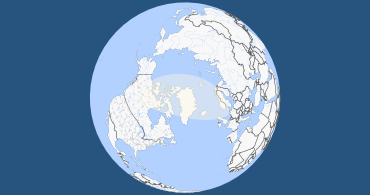This eclipse wasn't visible in Columbus - Which upcoming eclipses can be seen in your location?
Where the Eclipse Was Seen
Try our new interactive eclipse maps. Zoom in and search for accurate eclipse times and visualizations for any location.
Path of the Eclipse Shadow
Regions that saw, at least, a partial eclipse: North/West Europe, North in North America, Arctic.
This eclipse wasn't visible in Columbus - Which upcoming eclipses can be seen in your location?
Eclipse Shadow Path
0%
>0%
The dark areas symbolize night and twilight.
When the Eclipse Happened Worldwide — Timeline
The eclipse started at one location and ended at another. The times below are actual times (in UTC) when the eclipse occurred. This calculation uses a Delta T value of 27.7 seconds.
| Eclipse Stages Worldwide | UTC Time | Local Time in Columbus* |
|---|---|---|
| First location to see the partial eclipse begin | Jun 29 at 02:56:48 | Jun 28 at 10:56:48 pm |
| Maximum Eclipse | Jun 29 at 03:51:29 | Jun 28 at 11:51:29 pm |
| Last location to see the partial eclipse end | Jun 29 at 04:46:12 | Jun 29 at 12:46:12 am |
* These local times do not refer to a specific location but indicate the beginning, peak, and end of the eclipse on a global scale, each line referring to a different location. This eclipse isn't visible in Columbus.
Upcoming eclipses visible in Columbus
Next Partial Solar Eclipse will be on Nov 23, 1946
Eclipse calculations usually accurate to a few seconds
Countries Where the Eclipse Is Visible
| Country | Type | Start of Eclipse | End of Eclipse |
|---|---|---|---|
| Canada | Partial Solar Eclipse | 10:32 pm EST | 9:46 pm MST |
| Denmark | Partial Solar Eclipse | 4:58 am CEST | 5:13 am CEST |
| Faroe Islands | Partial Solar Eclipse | 2:59 am WET | 3:42 am WET |
| Finland | Partial Solar Eclipse | 4:06 am CET | 5:29 am EET |
| Greenland | Partial Solar Eclipse | 1:11 am | 12:26 am AST |
| Iceland | Partial Solar Eclipse | 3:04 am | 3:59 am |
| Norway | Partial Solar Eclipse | 3:56 am CET | 4:54 am CET |
| Russia | Partial Solar Eclipse | 6:30 am MSK | 6:42 am MSK |
| Svalbard and Jan Mayen | Partial Solar Eclipse | --- | --- |
| Sweden | Partial Solar Eclipse | 3:58 am CET | 4:30 am CET |
| United Kingdom | Partial Solar Eclipse | 3:57 am BST | 4:36 am BST |
All times shown in this table are local time. (Note: more than one time zone is listed.)
How Many People Can See This Eclipse?
| Number of People Seeing... | Number of People* | Fraction of World Population |
|---|---|---|
| Any part of the eclipse | 2,050,000 | 0.13% |
* The number of people refers to the resident population (as a round number) in areas where the eclipse is visible. timeanddate has calculated these numbers using raw population data provided by the Center for International Earth Science Information Network (CIESIN) at Columbia University. The raw data is based on population estimates from the year 2000 to 2020.

An Eclipse Never Comes Alone!
A solar eclipse always occurs about two weeks before or after a lunar eclipse.
Usually, there are two eclipses in a row, but other times, there are three during the same eclipse season.
This is the third eclipse this season.
First eclipse this season: May 30, 1946 — Partial Solar Eclipse
Second eclipse this season: June 14, 1946 — Total Lunar Eclipse

